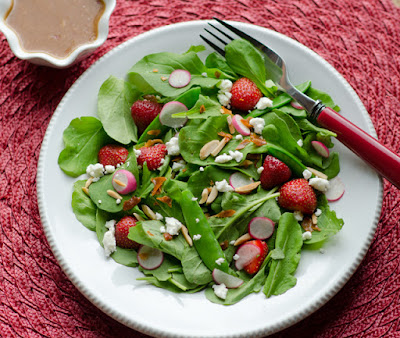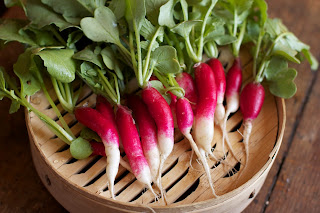RADISH ROOTS & SEED PODS BUTTERMILK SNOW
INGREDIENTS
CARROT JUICE 50g/5oz purple carrots or beetroot, peeled and sliced into 4cm/1 1/2in pieces 500ml/l 7 1/2fl oz mineral water 1 tsp salt
25g/ 3/4Oz whey (see Labneh recipe, page 28)
BUTTERMILK SNOW 500ml/ l7 1/2 fl oz cultured buttermilk 1 tbsp honey or maple syrup
LOVAGE SALT 100g/7oz salt, frozen
Bunch of fresh lovage leaves, harvested on a dry warm day
TO SERVE
3 radishes, including leaves, washed and sliced 1-Landful of radish seed pods
LOVAGE
Lovage (Levisticum officinale) is easy to grow, although it does need a cold snap to trigger germination so is best sown in autumn. Plant out in spring in a well- prepared, shady or sunny spot that has had plenty of organic matter added to the soil.
clip the plant in summer to ensure tender young leaves. After a few years divide in spring. to bulk up your stocks. Harvest seeds when they are nearly ripe, then dry them for using in biscuits, bread and soups.
METHOD
For the lactofermented carrot juice, place the carrot or beetroot pieces in a sterilized, 1 -litre/1 3/4-pint kilner jar. Add the mineral water, salt and whey. Keep at about 20°C/68°F for 2-3 days. Open the jar every day to relieve the pressure that builds inside it; also taste the liquid - it will have become mildly acidic and similar to yogurt in taste. Then refrigerate for
3 days to deepen the colour of the liquid and allow it to thicken slightly. Thereafter remove the carrot or beetroot pieces, which can be eaten or saved for a second preparation if so desired. If you plan on keeping the carrot juice for longer than a month, test its pH, which should be lower than 3.9.
For the buttermilk snow, mix the buttermilk and syrup well together. Freeze in a lidded airtight container.
For the lovage salt, blend the ingredients together until the herb is well combined. Pass through a sieve to remove any remaining fibres and then freeze the mix in a sealed container until needed. This method works well when preserving many types of summer herbs.
To serve, assemble the dish on frozen plates to allow the melting buttermilk snow to be enjoyed a little longer. Scrape the frozen buttermilk block over and over with fork prongs to create the snow. Add to the frozen plates with the radish slices, seed pods and 1 tbsp carrot juice. Garnish the dish with the bright green lovage salt and enjoy as soon as possible.


0 comments:
Post a Comment